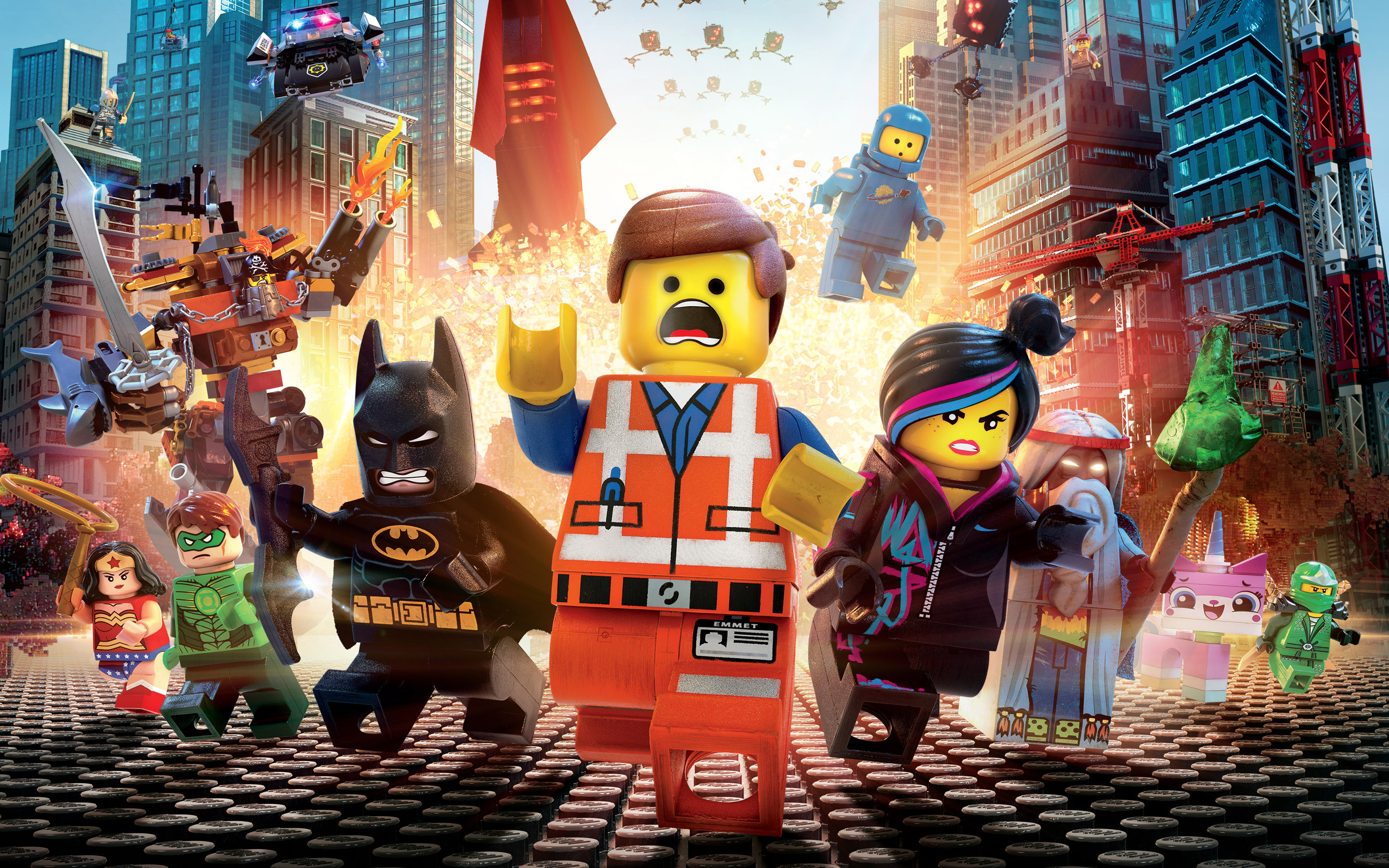The Oscars ceremony recently unfolded, and while The LEGO Movie might have been notably absent from the Best Animated Feature nominations, its spirit was undeniably present. The performance of ‘Everything is Awesome’, the film’s infectious theme song, became a highlight of the evening, featuring LEGO brick Oscar statuettes and a memorable heavy metal Batman interlude courtesy of Will Arnett. This vibrant performance served as a potent reminder of the song’s enduring presence in popular culture.
‘Everything is Awesome’ feels more and more like an oddly fitting theme song for our contemporary era. Consider these lyrics, delivered with upbeat energy by SNL’s The Lonely Island:
Life is good, ‘cause everything’s awesome!
Lost my job, it’s a new opportunity—
more free time for my awesome community!
Stepped in mud, got new brown shoes:
It’s awesome to win, it’s awesome to lose!
Blue skies, bouncy springs, we just named
two awesome things!
A Nobel Prize, a piece of string,
you know what’s awesome? Everything!
Everything you see, think, or say is awesome!
On the surface, this relentless positivity might seem jarring, even absurd. Are they genuinely suggesting such an unwavering optimistic approach to adversity? Perhaps, perhaps not entirely seriously. However, in a world grappling with economic uncertainties, evolving job markets, and persistent global conflicts, these seemingly simplistic lyrics resonate in a complex way. They feel simultaneously comical and profoundly relevant. In the face of overwhelming challenges, what alternative do we have but to navigate them with as much resilience and positivity as we can muster?
Chris Pratt, a star of The LEGO Movie, offered his perspective on the song’s relevance in an interview with Vulture, stating:
I think it follows the theme of this movie, which you think is just some Lego movie made to sell toys – and it’s actually a really subversive, interesting, thought-provoking commentary on society […] The song itself represents that, because it’s saying that everything is awesome, but it’s the anthem of this strange world that exists halfway between America and North Korea, you know what I mean? Twenty or 30 years from now, I think people will look back at ‘Everything Is Awesome’ and it’ll be more than just a cool pop song. It’s really reflective of where we are right now, and that’s what art is all about.
 The Lego Movie wide image showcasing characters and the vibrant world, reflecting the theme of the 'Everything Is Awesome Song'.
The Lego Movie wide image showcasing characters and the vibrant world, reflecting the theme of the 'Everything Is Awesome Song'.
Pratt astutely points out the song’s unexpected depth. For some, it might seem unusual to consider a children’s film song as ‘art,’ yet he touches upon a core concept within contemporary popular art theories. One particularly relevant framework for understanding ‘Everything is Awesome’ is metamodernism. Amidst discussions about postmodernism’s trajectory, metamodernism has emerged as a potential descriptor for our current cultural landscape. Luke Turner offers a concise explanation of metamodernism:
[R]ather than simply signalling a return to naïve modernist ideological positions, metamodernism considers that our era is characterised by an oscillation between aspects of both modernism and postmodernism. We see this manifest as a kind of informed naivety, a pragmatic idealism, a moderate fanaticism, oscillating between sincerity and irony, deconstruction and construction, apathy and affect, attempting to attain some sort of transcendent position, as if such a thing were within our grasp. The metamodern generation understands that we can be both ironic and sincere in the same moment; that one does not necessarily diminish the other.
In essence, metamodernism acknowledges the limitations of both modernism and postmodernism. Modernism’s grand narratives feel out of sync with our fragmented reality, while postmodernism’s deconstruction can leave us adrift. Metamodernism, in contrast, embraces a “kind of informed naivety.” It allows for belief and sincerity, even with the awareness that these beliefs might be idealistic or unattainable.
The Metamodern “Awesome”: Irony and Sincerity in Pop Culture
So, how does this relate to ‘Everything is Awesome’ and The LEGO Movie? More profoundly than one might initially assume. Seth Abramson penned an insightful article a year prior, highlighting The LEGO Movie as potentially “the first unabashedly metamodern children’s film in Hollywood history.” He specifically addresses the simultaneous irony and sincerity embedded within the song that gained prominence at the Oscars:
In the pre-metamodern world, these lyrics would be immediately (and rightly) received as ironic. These days, not so much. In fact, it’s impossible to tell whether the exuberance behind the song above is real or feigned, as it’s simultaneously the anthem for a repressive totalitarian state run by Lord Business and an unbearably catchy, optimistic tune the high-spirited Emmet continues to enjoy even after its sinister intentions are revealed.
This blending of “real” and “feigned” is a hallmark of contemporary art and culture. Kyle Karthauser, in a blog post on Notes on Metamodernism, explores the concept of “the awesome” as the metamodern equivalent of the sublime.
Etymologically it gestures at the sublime through “awe,” an experience that mingles abject fear and profound ecstasy. In today’s vernacular, it denotes delight (“Hall & Oates is coming to the state fair? That’s awesome!”) And while the everyday use of “awesome” may be used to describe mundane, not-terribly-profound things, in the broadening of its definition it forces us to broaden our aesthetic understanding of the space between the sublime and the beautiful. From a classical or postmodern standpoint, there is no space between the two, and absolutely no overlap.
Karthauser’s full post offers a deeper dive into this idea, examining figures like Evel Knievel through a metamodern lens. He also touches upon the surface-level nature of the metamodern era and the surprising moments of insight that can emerge from engaging with these surfaces.
After 30+ years of the postmodern paradigm, an experience of this sort is genuinely mind-boggling. When the dominant critical practice is that of dissolving texts into various discourses, of tracing allusions, sniffing out irony, and contemplating the terminally arbitrary nature of signification itself, you aren’t prepared for Evel Knievel. You aren’t prepared for the Star Wars Kid. When someone tattoos this permanently onto their body, your belief in irony as the be-all-end-all of enlightened cultural expression has to be shaken.
 Bo Bartlett's 'School of the Americas' artwork, an example of metamodern art discussed in relation to the 'Everything Is Awesome Song' and its blend of irony and sincerity.
Bo Bartlett's 'School of the Americas' artwork, an example of metamodern art discussed in relation to the 'Everything Is Awesome Song' and its blend of irony and sincerity.
These seemingly absurd or over-the-top cultural moments can provide a temporary reprieve from cynicism and negativity, without negating the need for critical engagement with the world. They offer moments of “informed naivety.”
Embracing the Awesome: Finding Meaning in a Metamodern World
‘Everything is Awesome’ resonated so strongly because it operates on multiple levels simultaneously. It’s both incredibly simple and intentionally exaggerated. We can interpret it superficially or deeply, ironically or sincerely, and all interpretations hold a degree of validity. Is everything truly awesome? Realistically, no. But by choosing to act as if it could be, by embracing this informed naivety, we might just achieve something genuinely meaningful and, perhaps more importantly, find some joy along the way.
So, embrace your metamodern side. Listen to ‘Everything is Awesome’ here and maybe even indulge in the simple pleasure of watching hamsters eat tiny burritos. In a complex world, sometimes a bit of awesome, even with a wink, is exactly what we need.

